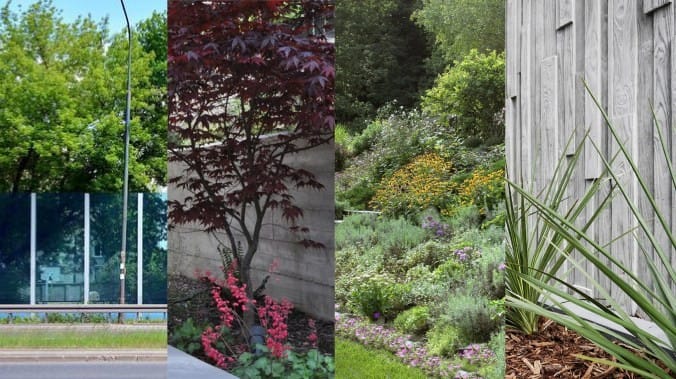Metrolinx releases Ontario Line design survey results
This survey determines the look and feel of the new Ontario Line and GO Expansion infrastructure.
Jan 26, 2022
Asked and answered.
Metrolinx asked for public input on how transit changes for the new Ontario Line and GO Expansion infrastructure would fit into established Toronto neighbourhoods, such as Riverside, South Riverdale and Leslieville.
The results of the design consultation, which summarize the feedback from east end residents are in and will help shape the future of transit in Canada’s largest city.
Back on Oct. 24, 2021, Metrolinx closed the online questionnaire and feedback that focused on new retaining walls, noise barriers, underpass treatments and vegetative landscaping. There were 749 total comments and 162 unique respondents. The report can be viewed here.
Overall feedback on design objectives
When it comes to ranking the design priorities for the new infrastructure, the survey participants prioritized reducing noise levels, protecting the tree canopy, introducing new trees and plants, and minimizing the potential visual and physical impacts of transit service within the rail corridor.
If you missed the Lakeshore East Joint Corridor Early Works key findings, Metrolinx conducted a noise and vibration study, and committed to a minimum noise wall height of five metres which would effectively maintain or reduce existing noise levels for the majority of properties, despite the expected increase in transit service through the Ontario Line and GO Expansion projects.
Noise walls
An artist concept of a noise wall. (Metrolinx image)
Several survey participants preferred noise barriers made from the material that has the strongest noise-reducing benefit and noted the level of transparency should vary depending on the location. Respondents expressed their preference for having translucent or opaque noise walls in residential areas, to ensure privacy, while more transparent walls were preferred in areas with green space or activity zones near the rail corridor to allow light in.
Based on this feedback, Metrolinx conducted additional studies on alternative noise wall materials and found that, along the Ontario Line/GO Transit corridor that runs through Riverside and Leslieville, solid – non-transparent – sound-absorbing walls offered little noise reducing benefit over the transparent walls while the visual impact of a solid wall was significant.
Retaining walls
An artist rendering of park space next to a rail line. (Metrolinx image)
For both the future retaining and noise walls, survey participants said they wanted Metrolinx to explore greenery and artwork to soften the visual impact of the new infrastructure. In addition, a consistent theme found in the survey and residents’ feedback is the importance of graffiti management.
Activity Features for Open Green Space
Accessibility, deterring vandalism and a desire for multi-use trails were the top priorities from survey participants for the new green space Metrolinx is creating after construction is complete.
This feedback will help guide ongoing discussions between Metrolinx and the City of Toronto as they work together to deliver this new green space for the community. In addition to this, both partners are exploring neighbourhood park enhancements, a multi-use path for Jimmie Simpson Park and a temporary alternative location for the Gerrard-Carlaw Parkette during construction.
Underpass treatments
Queen Street East bridge that will be revitalized and expanded. Metrolinx is working closely with City of Toronto staff and community feedback to ensure the new bridge is integrated into the existing fabric of Riverside and Leslieville (Metrolinx image using Google maps)
As part of Ontario Line upgrades, new rail bridges at Eastern Avenue, Queen Street, Dundas Street and Logan Avenue will be built. Based on feedback from the community, Metrolinx is exploring architectural lighting that can be integrated into the underpass walls. In addition, there is an ongoing discussion with the City of Toronto to explore a potential public art mural program.
Landscaping and Planting features
Metrolinx will not be exploring terraced landscape features as the survey results were clear that this option is not preferred because it would take up space. Instead, embankments and vertical green walls are being explored using evergreen and perennial plants for colourful vegetation in all seasons. Continuous bench seating that is accessible and integrated will be explored in neighbourhood parks.
When it comes to new trees, deciduous row and coniferous trees are the top choices selected by survey respondents to create a diverse species mix while providing greenery all year round. Working with the City of Toronto, Metrolinx is exploring early tree plantings as suggested by survey participants.
Moving forward
Metrolinx recently began vegetation clearing within the rail corridor to support the GO Expansion infrastructure. Construction of the Lakeshore East Joint Corridor Early Works will begin in mid-2022 on the south side of the corridor first. If you missed it, Metrolinx has created a video animation to visualize how this work will be completed.
Look for future stories on how community input will help shape Metrolinx transit projects.
You can reach Metrolinx Ontario Line community experts at ontarioline@metrolinx.com with comments and feedback on the design elements of the noise walls, retaining walls and vegetation ideas.
by Daryl Gonsalves Metrolinx community relations, Katiana Moussa issues specialist for Ontario Line
